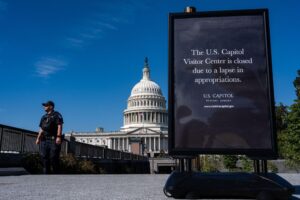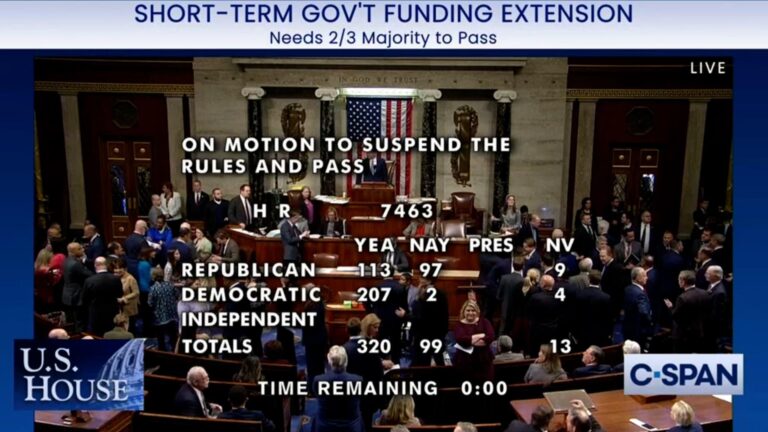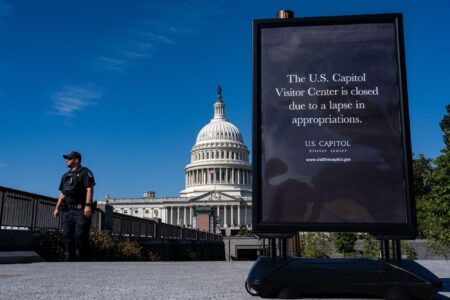Urgent Appeal for Temporary Funding to Avert Government Shutdown
As the federal fiscal deadline rapidly approaches, Republican leaders have intensified their appeal to Democratic lawmakers to swiftly endorse a temporary funding resolution designed to prevent a government shutdown. This stopgap measure is intended to sustain government functions and grant additional time for comprehensive budget negotiations. Republicans stress that without immediate action, critical public services could face interruptions, affecting millions across the nation.
The proposed short-term funding plan includes several vital elements:
- Ongoing financial support for federal departments to ensure uninterrupted service delivery
- Continued funding for defense and veterans’ affairs to uphold military readiness and veteran care
- Temporary provisions for border enforcement to maintain current security operations
GOP leaders argue that adopting this interim funding is a practical step forward, urging Democrats to set aside partisan disputes in favor of national stability. This call comes amid rising public anxiety about the consequences of a government shutdown, highlighting the critical need for bipartisan cooperation.
| Area Affected | Possible Shutdown Impact |
|---|---|
| Federal Workforce | Mandatory furloughs and postponed salaries |
| Government Services | Suspension or scaling back of programs |
| Security Agencies | Decreased operational effectiveness |
Effects of Temporary Funding on Federal Agencies and Public Services
Implementing a short-term funding resolution carries significant bipartisan consequences for federal agencies’ functionality. By ensuring a continued flow of resources, departments such as the Centers for Disease Control and Prevention (CDC) and the Department of Energy can avoid immediate shutdowns, allowing essential programs to proceed without interruption. However, the provisional nature of this funding often forces agencies to delay strategic initiatives and long-term projects, creating operational uncertainty. Both parties recognize these challenges, fueling ongoing debates about fiscal discipline and policy priorities.
Public services, including national monuments, food safety inspections, and healthcare for veterans, experience mixed outcomes under a stopgap bill. While it prevents immediate service disruptions, it does not resolve deeper budgetary issues or funding shortfalls. Lawmakers are particularly concerned with:
- Preserving workforce morale amid funding uncertainties
- Guaranteeing continuous public access to federally supported amenities
- Managing the backlog of postponed agency projects
Without a permanent budget solution, federal agencies remain in a state of flux, which can erode public trust and hinder effective governance.
Critical Congressional Deadlines and Negotiation Points in Funding Talks
As the threat of a government shutdown intensifies, congressional leaders have ramped up negotiations focused on passing a temporary funding resolution. Republicans are advocating for a continuing resolution that would sustain government operations while providing additional time to finalize a full budget agreement. Despite ongoing disputes over spending levels and policy provisions, GOP leaders view this as a necessary compromise to avoid immediate disruptions.
Several key dates are pivotal in these negotiations. Lawmakers aim to finalize funding arrangements by midnight on September 30, marking the end of the federal fiscal year. Additionally, committee deadlines for appropriations bills throughout September add pressure to reach consensus. Below is an overview of important milestones:
| Deadline | Event | Importance |
|---|---|---|
| September 15 | House Appropriations Drafting | Completion of initial spending proposals |
| September 22 | Senate Committee Review | Resolution of House-Senate differences |
| September 30 | Funding Expiration | Risk of government shutdown |
- Republicans: Push for a short-term funding bill to maintain operations and encourage bipartisan compromise.
- Democrats: Demand protections for key policies and increased funding in priority areas before agreement.
- Major Issues: Military budgets, social welfare programs, and border security remain central points of contention.
Strategies for Lawmakers to Enhance Budget Stability and Reduce Political Tensions
To create a more predictable fiscal environment and minimize the risk of shutdowns, legislators should prioritize pragmatic cooperation over partisan standoffs. Passing narrowly focused short-term funding bills can ensure government continuity while allowing time for thorough budget discussions. Establishing open communication channels and bipartisan working groups early in the budget process can help prevent misunderstandings and foster mutual confidence.
Moreover, increasing transparency and regularly updating the public and stakeholders can mitigate political fallout. Lawmakers might consider institutionalizing measures such as:
- Automatic continuing resolutions that activate if budget deadlines are missed, preventing sudden funding gaps.
- Independent budget oversight commissions to provide impartial evaluations.
- Clearly defined fiscal deadlines aligned with the government’s financial calendar to reduce last-minute pressures.
| Initiative | Objective | Expected Outcome |
|---|---|---|
| Automatic Continuing Resolution | Avoids government shutdowns | Reduces political brinkmanship |
| Bipartisan Budget Oversight Panels | Provides nonpartisan budget review | Builds trust and predictability |
| Structured Fiscal Deadlines | Minimizes last-minute negotiations | Encourages timely budget agreements |
Conclusion
With the deadline to prevent a government shutdown drawing near, Republican lawmakers continue to urge Democrats to approve a temporary funding resolution that would sustain federal operations. Both parties face increasing pressure from constituents and interest groups, making the need for a bipartisan agreement more pressing than ever. The upcoming days will be decisive in determining whether a short-term deal can be reached to avoid economic disruption and ensure the continuity of essential services for Americans nationwide. Our coverage will remain attentive to these critical developments.





